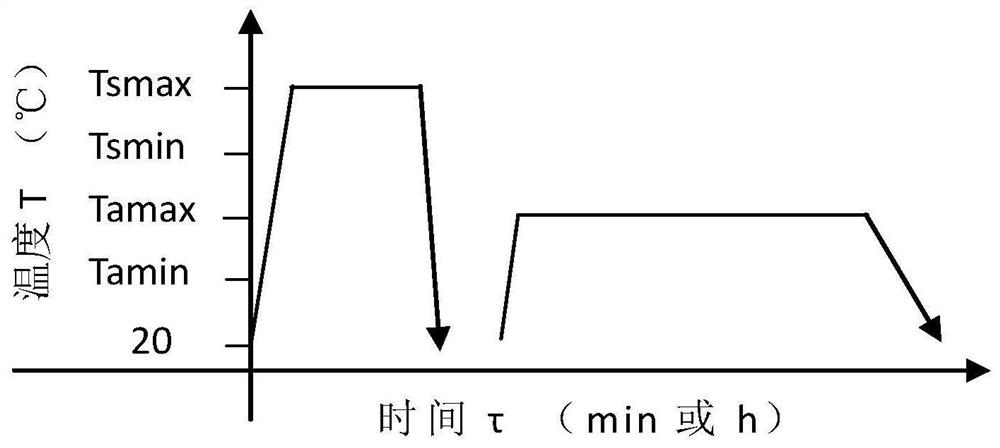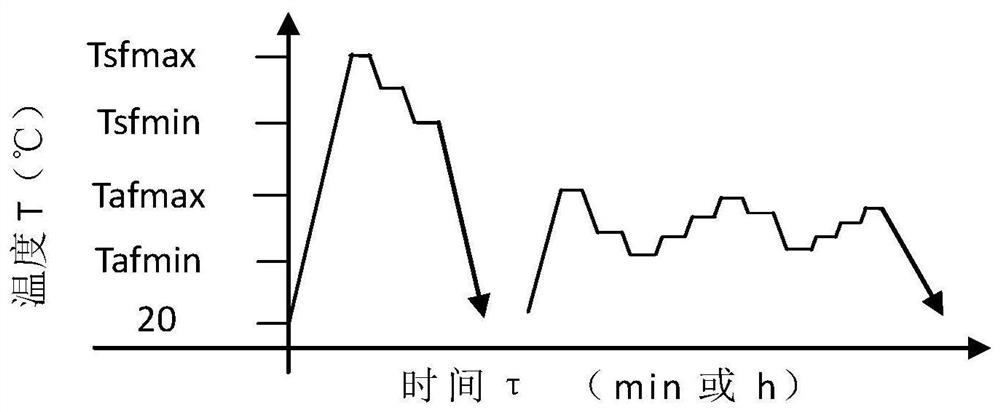Rapid solid solution and rapid starting from high-temperature variable-temperature alternating aging heat treatment method
An aging heat treatment and solution heat treatment technology, applied in the field of material heat treatment, can solve the problems of long heating time, low qualified product rate, poor quality stability, etc., and achieve the effect of reducing the total time
- Summary
- Abstract
- Description
- Claims
- Application Information
AI Technical Summary
Problems solved by technology
Method used
Image
Examples
Embodiment Construction
[0055] Exemplary embodiments of the present disclosure will be described in more detail below with reference to the accompanying drawings. Although exemplary embodiments of the present disclosure are shown in the drawings, it should be understood that the present disclosure may be embodied in various forms and should not be limited by the embodiments set forth herein. Rather, these embodiments are provided for more thorough understanding of the present disclosure and to fully convey the scope of the present disclosure to those skilled in the art.
[0056] Such as figure 2 As shown, the embodiment of the present invention proposes a rapid solid solution and rapid starting high temperature variable temperature alternating aging heat treatment method, including: step 21, rapid solution heat treatment process; and step 22, rapid starting high temperature variable temperature alternating aging heat treatment process.
[0057] The process of the method is as follows: the first pa...
PUM
 Login to View More
Login to View More Abstract
Description
Claims
Application Information
 Login to View More
Login to View More - R&D
- Intellectual Property
- Life Sciences
- Materials
- Tech Scout
- Unparalleled Data Quality
- Higher Quality Content
- 60% Fewer Hallucinations
Browse by: Latest US Patents, China's latest patents, Technical Efficacy Thesaurus, Application Domain, Technology Topic, Popular Technical Reports.
© 2025 PatSnap. All rights reserved.Legal|Privacy policy|Modern Slavery Act Transparency Statement|Sitemap|About US| Contact US: help@patsnap.com



